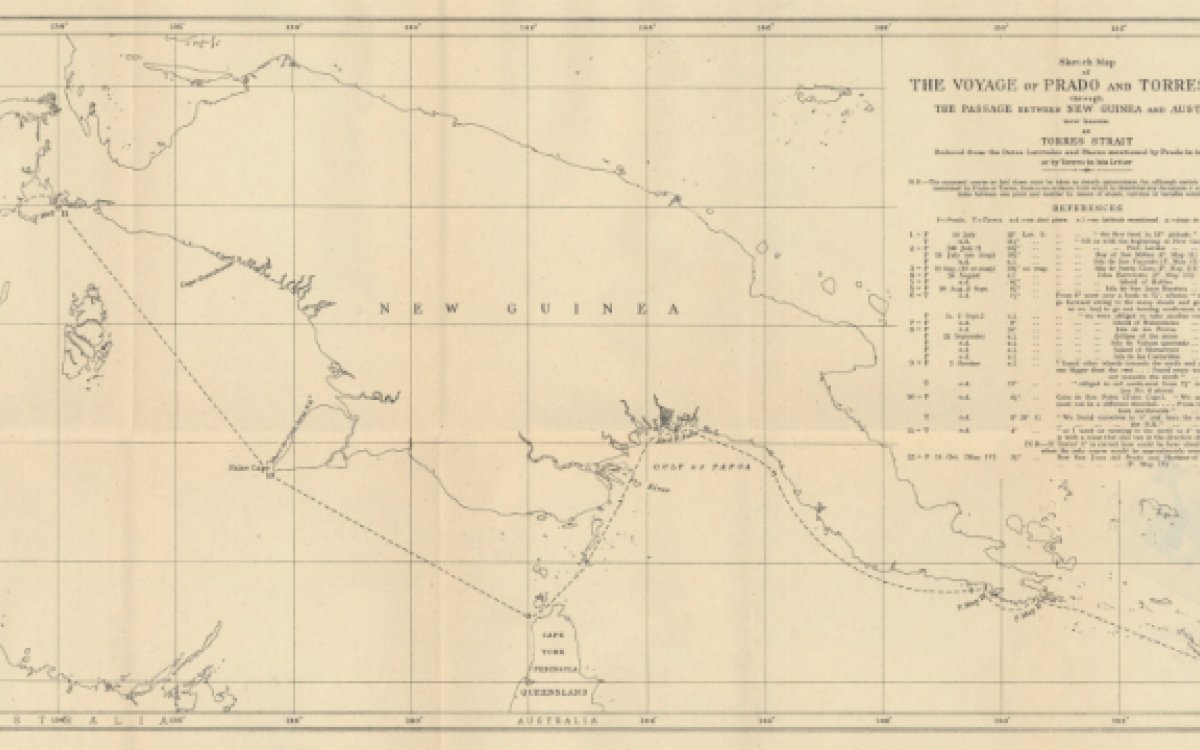
Diego de Prado Y Tobar, Henry N. Stevens (1855-1930), George F. Barwick (1853-1931), New light on the discovery of Australia 1930, nla.obj-233009801
Recorded European visits to Australia before the arrival of Lieutenant James Cook on the 'Endeavour' in 1770 show no evidence of a Spanish fleet arriving here.
In about October 1606, Spaniard Luis Vaez de Torres sailed through the strait that now bears his name, between the northern tip of Cape York and New Guinea. He probably sighted the Australian mainland, but there is no evidence that he landed.
His ship the 'San Pedro' was part of an expedition of 3 vessels commanded by Pedro Fernandez de Quiros, who had set out from Peru to discover "Terra Australis", and landed on the island now known as Vanuatu. The ships were separated and de Quiros turned around and sailed to Mexico, but Torres sailed on, went through the Strait and eventually landed in Manila.
A few months before this, around March 1606 the Dutch ship 'Duyfken' ('Little Dove') under Willem Janszoon made a voyage of discovery along the western side of Cape York near the present site of Weipa, making this the first documented visit to Australia by a European ship (although Janszoon thought he was mapping part of New Guinea).
There is a great deal of material on the internet about the early voyages of the Spanish, Portuguese, Dutch, French and English to and near Australia. The Project Gutenberg Australia site features Australian discoverers, explorers and pioneers, and has a time line and links to other sites.
A timeline of significant landings can be found at the Australia on the Map 1606-2006 website, along with early maps, excerpts from journals, pictures and a bibliography for further references. This website has been archived in the Australian web archive. The publisher's site is no longer current.
Another great resource is the catalogue from the Library's Mapping Our World exhibition: Mapping our world : Terra Incognita to Australia
The exhibition was held from November 2013-March 2014, and offered viewers the opportunity to follow the European discovery of Australia. The catalogue provides a commentary of the exhibition, with rich historical information.